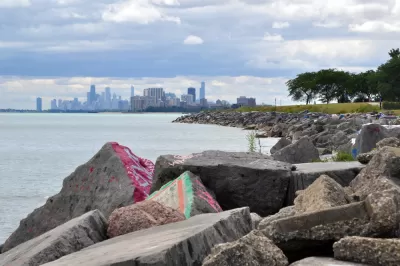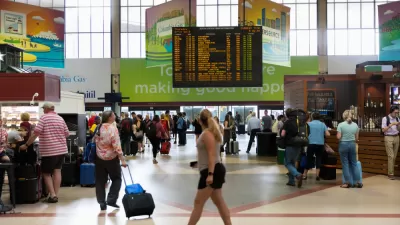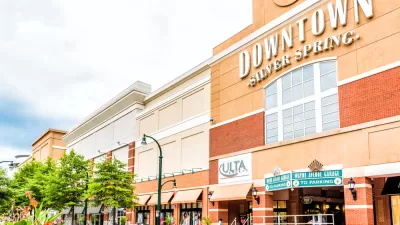A comprehensive review of the inner-ring suburb of Evanston, Illinois, outside Chicago, and a transformation Jane Jacobs would surely love. The proof is in the pudding: Evanston car ownership are far below regional averages.

"At first glance, downtown Evanston, Illinois, doesn’t look revolutionary—just another a gentrifying urban core with the obligatory Whole Foods, the local organic sustainable restaurants serving $14 cocktails, the towering new, high-end luxury apartments filled with stainless steel appliances and granite countertops," writes T.R. Goodman in a longread feature for Politico Magazine.
"It takes, in fact, a few extra minutes in the neighborhood to realize what’s different—and what’s missing. Downtown Evanston—a sturdy, tree-lined Victorian city wedged neatly between Lake Michigan and Chicago’s northern border—is missing cars. Or, more accurately, it’s missing a lot of cars. Thanks to concerted planning, these new developments are rising within a 10-minute walk of two rail lines and half-a-dozen bus routes. The local automobile ownership rate is nearly half that of the surrounding area."
Goodman traces the ideas upon which Evanston built that "concerted planning" to Jaime Lerner's example in Curitiba. Evanston adopted the Curitiba model, according to Goodman, in response to a decline that began in the 1950s as farther flung suburbs began to rack up successes. "Beginning in 1986, a new plan for Evanston embraced the idea of a '24/7' downtown, pouring resources into increasing the density of its downtown—a density that also meant decreasing residents’ reliance on automobiles. As a compact city, Evanston couldn’t compete with the vast sprawling parking spots of the Old Orchard Mall. It had to build a different sort of appeal," writes Goodman.
Explaining contemporary planning terms, inspired by Jane Jacobs and Jaime Lerner, like TOD, density, and mixed use Goodman notes that terms like those have become so mainstream. In fact, and cities all over the country have embraced these concepts:
"Today, more cities are embracing transit-oriented development and heralding it as an antidote to climate change, a cure for the anomie of our 'Bowling Alone' culture and an economic boon to cash-strapped local governments. From northeastern 'suburbs' like Arlington, Virginia, to western car-centric cities like Salt Lake to Dallas, local officials are pushing for mixed-use, high-density development within a few minutes walk of a transit line."
The article is a longread, so there is a lot more on the details of Evanston's zoning code, an explanation of the role of parking requirements in the creation of sprawl, the challenges facing a density-focused planning agenda, the still-powerful political support behind car-centric thinking, how Millennials figure into the whole redevelopment equation, and more.
FULL STORY: The Suburb That Tried To Kill the Car

Alabama: Trump Terminates Settlements for Black Communities Harmed By Raw Sewage
Trump deemed the landmark civil rights agreement “illegal DEI and environmental justice policy.”

Planetizen Federal Action Tracker
A weekly monitor of how Trump’s orders and actions are impacting planners and planning in America.

The 120 Year Old Tiny Home Villages That Sheltered San Francisco’s Earthquake Refugees
More than a century ago, San Francisco mobilized to house thousands of residents displaced by the 1906 earthquake. Could their strategy offer a model for the present?

Opinion: California’s SB 79 Would Improve Housing Affordability and Transit Access
A proposed bill would legalize transit-oriented development statewide.

Record Temperatures Prompt Push for Environmental Justice Bills
Nevada legislators are proposing laws that would mandate heat mitigation measures to protect residents from the impacts of extreme heat.

Downtown Pittsburgh Set to Gain 1,300 New Housing Units
Pittsburgh’s office buildings, many of which date back to the early 20th century, are prime candidates for conversion to housing.
Urban Design for Planners 1: Software Tools
This six-course series explores essential urban design concepts using open source software and equips planners with the tools they need to participate fully in the urban design process.
Planning for Universal Design
Learn the tools for implementing Universal Design in planning regulations.
Clanton & Associates, Inc.
Jessamine County Fiscal Court
Institute for Housing and Urban Development Studies (IHS)
City of Grandview
Harvard GSD Executive Education
Toledo-Lucas County Plan Commissions
Salt Lake City
NYU Wagner Graduate School of Public Service





























